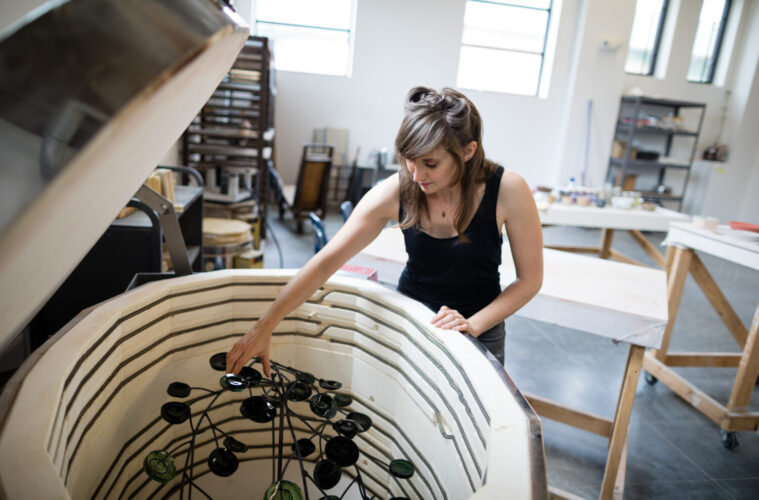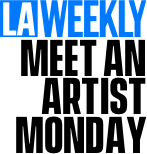 For interdisciplinary artist Jenny Yurshansky, home has never really been a place—at least not in the strict geographical sense. She was born during her parents’ immigration, in the middle of a fraught journey between continents, and that foundational statelessness has informed her sense of self and relationship to the world ever since. In her research-infused art practice, she deftly unravels personal, geopolitical, and often botanical histories—finding ready metaphors in nature for the malleable structure of societies and of families, and undeniable power in direct engagement and individual storytelling. Based in true stories and science-minded inquiry, given form through meaningful objects from embroidered textiles to large-scale sculptural installations, oral and photographic archives, books and texts, photographs, and a variety of further materials as best suited to the matters under examination. Her current project, Rinsing the Bones, invites audience participation in creating a compendium of immigration narratives—chronicling events, cataloging treasured objects, and interrogating the organic methodologies by which history is assembled.
For interdisciplinary artist Jenny Yurshansky, home has never really been a place—at least not in the strict geographical sense. She was born during her parents’ immigration, in the middle of a fraught journey between continents, and that foundational statelessness has informed her sense of self and relationship to the world ever since. In her research-infused art practice, she deftly unravels personal, geopolitical, and often botanical histories—finding ready metaphors in nature for the malleable structure of societies and of families, and undeniable power in direct engagement and individual storytelling. Based in true stories and science-minded inquiry, given form through meaningful objects from embroidered textiles to large-scale sculptural installations, oral and photographic archives, books and texts, photographs, and a variety of further materials as best suited to the matters under examination. Her current project, Rinsing the Bones, invites audience participation in creating a compendium of immigration narratives—chronicling events, cataloging treasured objects, and interrogating the organic methodologies by which history is assembled.
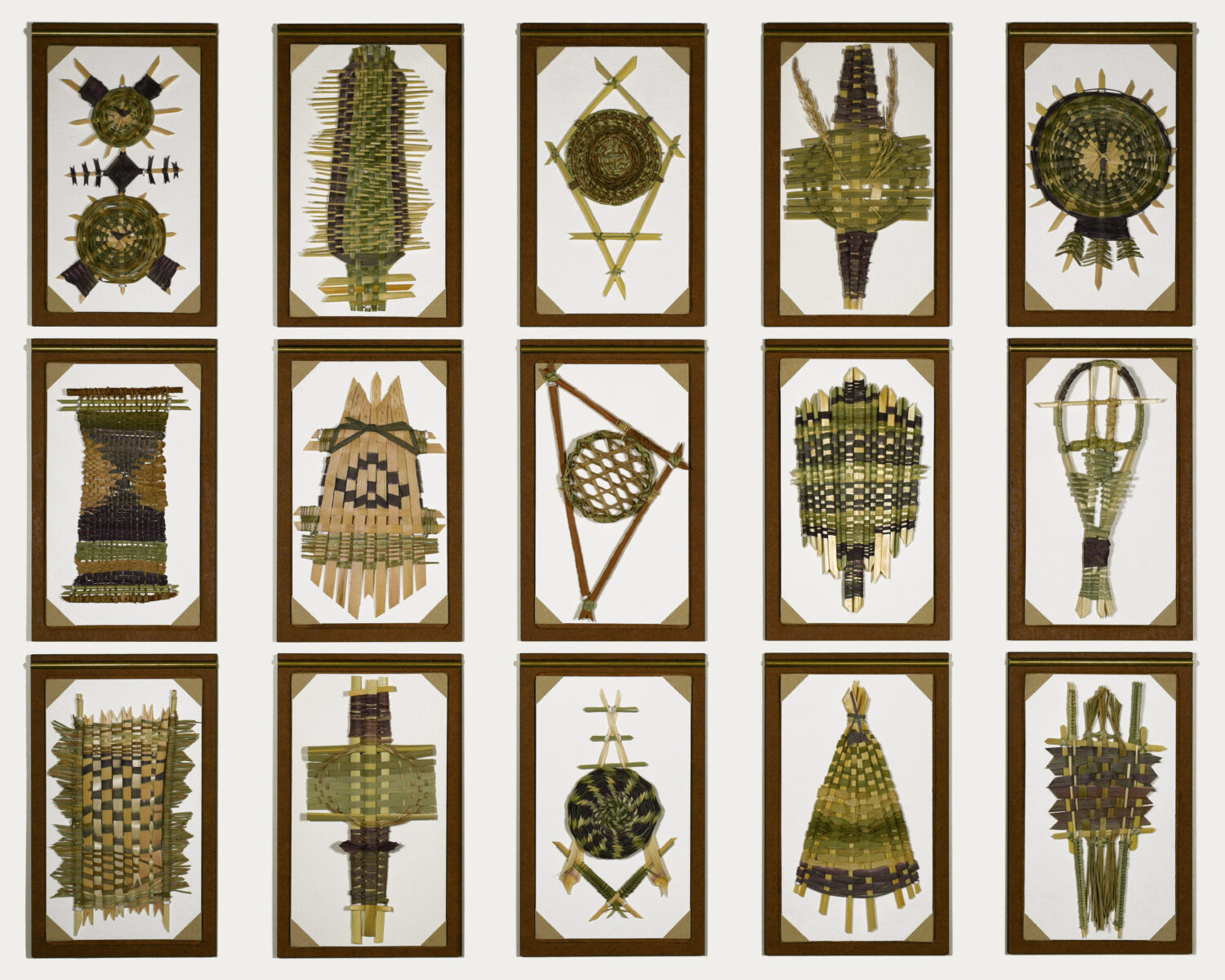
Jenny Yurshansky: Blacklisted – A Planted Allegory, Placeholder
L.A. WEEKLY: When did you first know you were an artist?
JENNY YURSHANSKY: I was always making things but didn’t know that the word “artist” was something I could attach to myself as an identity. I thought that was for a separate class of people. Only once I found myself deeply exploring and resonating with the paths of inquiry and possibilities of offering alternative means by which to see, understand, and frame the world around us through making art did I feel like that is a label I was permitted to inhabit, which happened quite early in my time at as an undergraduate art major at UCLA. Mostly because my professors were incredibly intelligent, constructively challenging, and generous people who made their chosen paths so visible to us as their students. My mentors there were Mary Kelly, Cathie Opie, James Welling, Lari Pittman, Jeffrey Vallance, and Don Suggs.
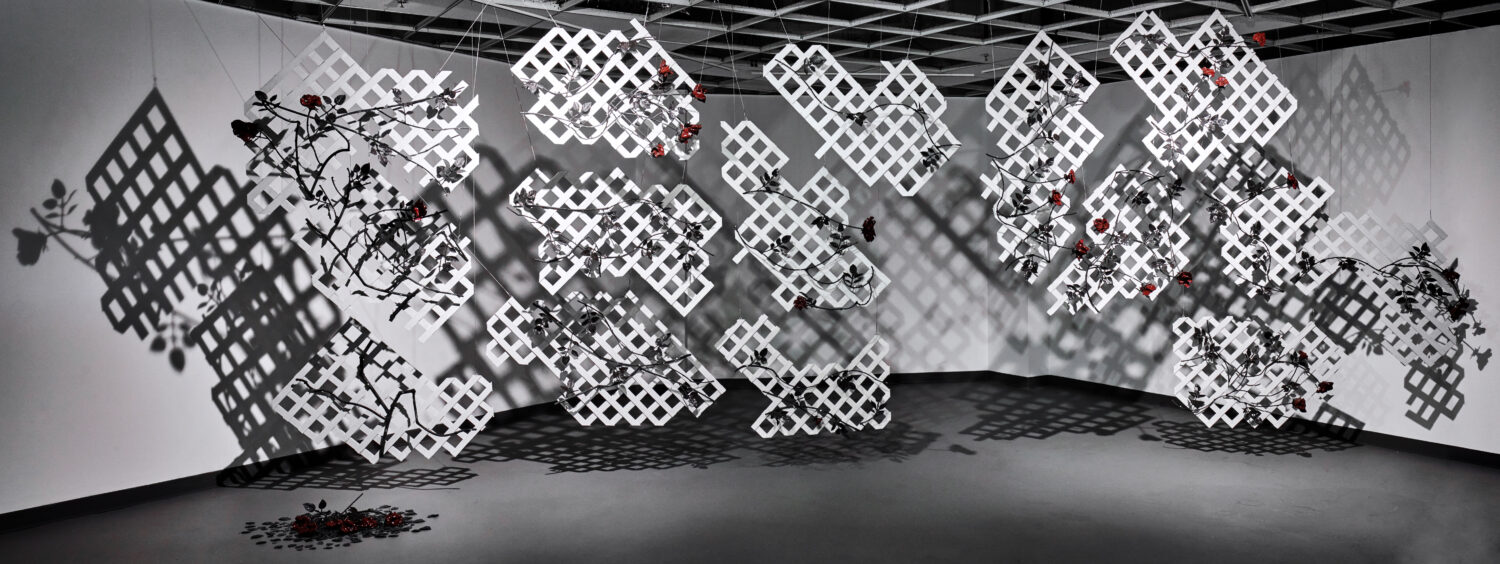
Jenny Yurshansky: There Were No Roses There – Diaspora
What is your short answer to people who ask what your work is about?
My practice is deeply informed by being a refugee. Through a research-based approach, I explore the trauma of displacement and interrogate notions of belonging and otherness within the frames of landscape, historical documents, and social constructs. My long-term projects form intertwined narratives and span the mediums of sculpture, photography, installation, and writing, often incorporating formal elements of absence, loss, and erasure.
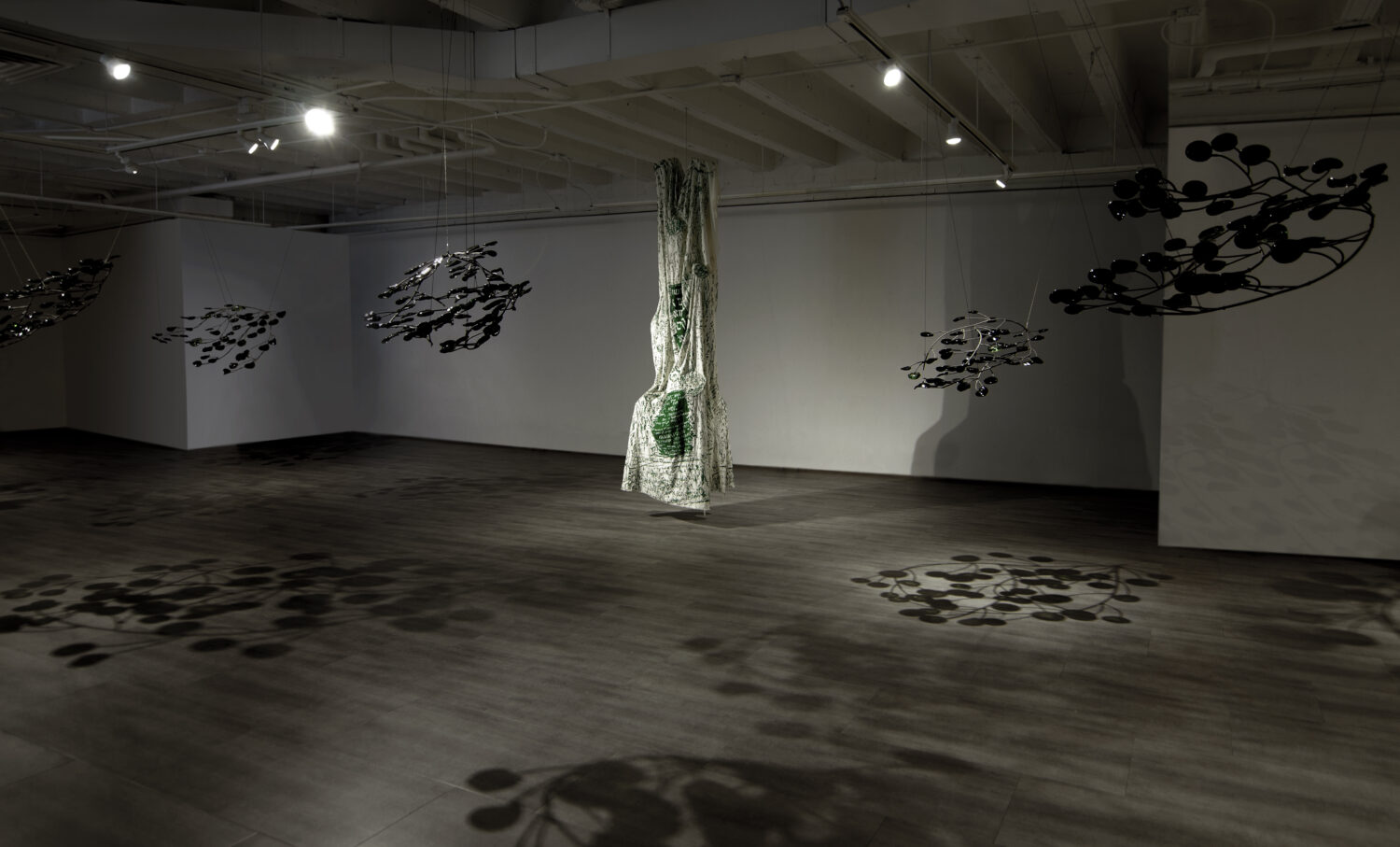
Jenny Yurshansky: A Legacy of Loss – Disperse
What would you be doing if you weren’t an artist?
Costume designer or special effects makeup artist, I love the research and innovation that are required in both fields, and the challenge of pushing against a boundary that’s set by whatever the parameters may be. I’ve always been obsessed with sewing since my grandmother and I made a jacket for Sugarplum, my teddy bear, when I was very young. I thought it was the most incredible thing to be able to create something from nothing. My mom was very generous and allowed me to mess around with her sewing machine from that point on. I’m self-taught and still make or alter most of my clothes as a way to decompress between projects. My dad checked out books on theatrical makeup for me from UCLA’s library (he worked in a research lab on campus). My earliest joy was making it look like I gave my sister a black eye and bloody lip with my mom’s make-up, a healthier way of channeling my frustration with her now, but also the total glee I felt when I saw the reaction on my parent’s faces when I sent her to show them.
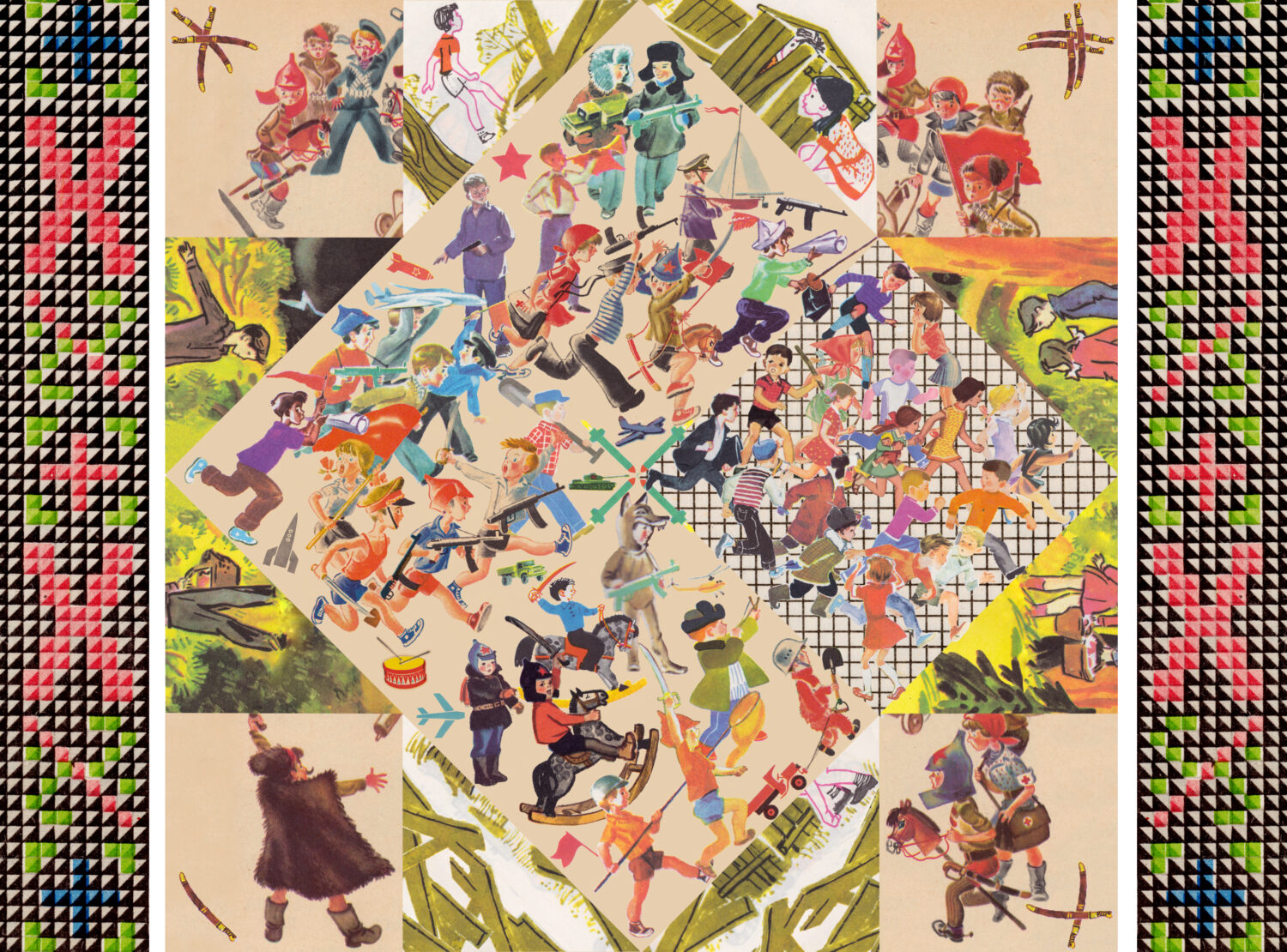
Jenny Yurshansky: Hide and Seek
Did you go to art school? Why/Why not?
Yes. However, I didn’t always feel that I had “permission” to do so. My parents are Soviet Jewish refugees, and I was born stateless in Rome while they were trying to get to the United States. It just didn’t even come up as an option in the realm of possibilities. The focus was on being successful in the ways they understood it, which revolved around the basic needs of survival. Their goal for me was to have a stable and comfortable income that would allow me to feed, shelter, and clothe myself. If I had the capacity to make sure they would be safe and cared for in their old age, that would be a bonus.
My closest relationship with a teacher was my AP Studio Art teacher, who made me apply to UCLA (undeclared), helped me find my voice to write it, and mailed my application for me. Even with her as my mentor, I still could not fathom how one survived as an artist. I found myself floundering for several reasons in my first year at UCLA. Mostly because I needed to learn how to study in a way that matched my brain patterns (I’ve been diagnosed with ADHD since third grade), I was utterly unprepared for the lack of structure in the university system. I tried several times to apply to the Design program but kept being rejected. Feeling defeated, I applied to the Art program out of desperation. I was accepted on my first try and thought that the program must not be that great if it was that easy to get in. This is how incredibly naïve I was at the time about anything to do with the art world. I cannot express how grateful I am that things worked out the way they did. The world truly opened for me from that moment on, and I went on to do a postgrad in Critical Studies at the Malmö Art Academy in Sweden, and received an MFA in Visual Art from UC Irvine.
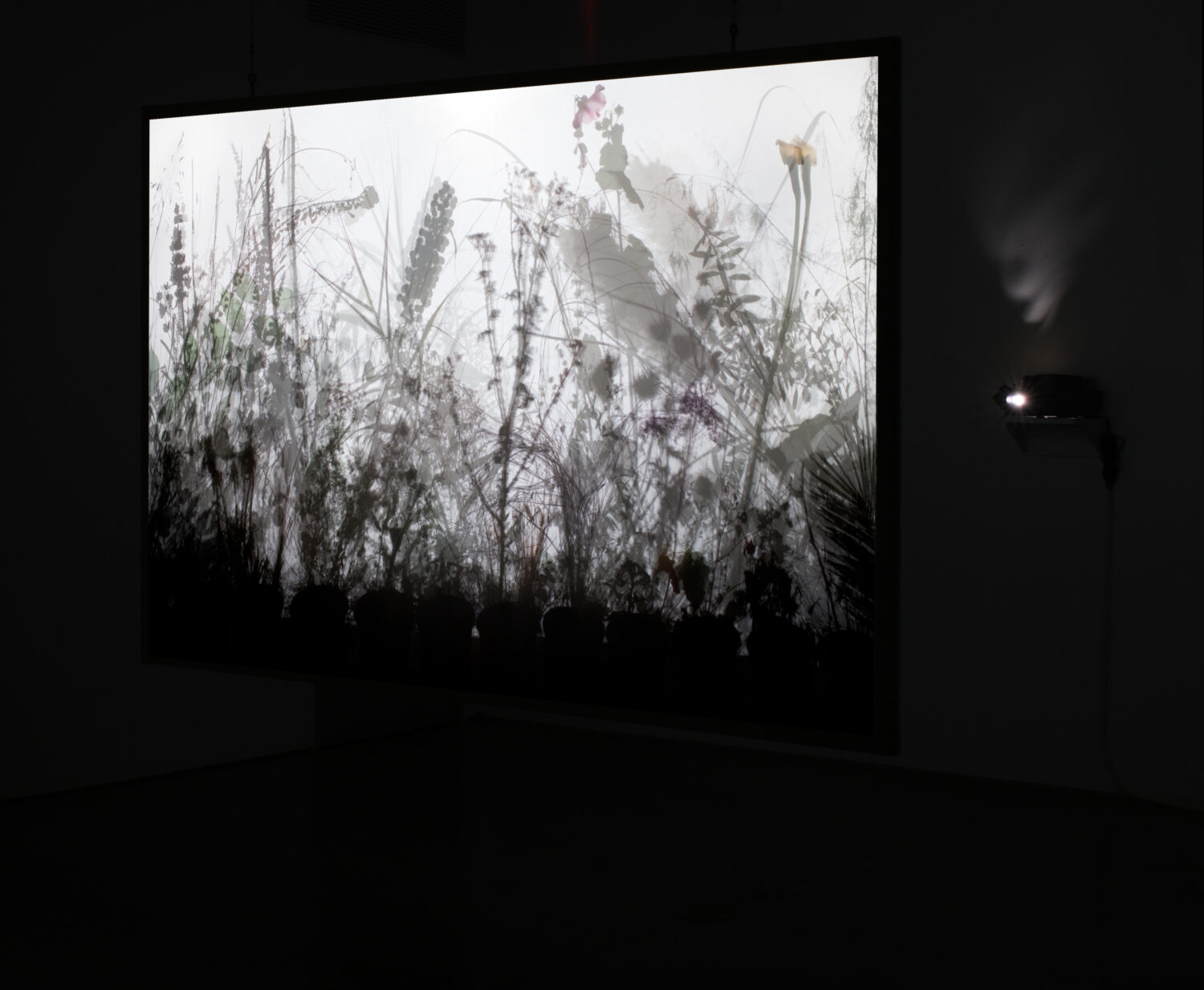
Jenny Yurshanksy: Blacklisted – A Planted Allegory, Asylum
Why do you live and work in L.A., and not elsewhere?
I have lived elsewhere, eleven years in Sweden and a year in Berlin and New York, but it is Los Angeles that I returned to in 2015 and where I have the deepest roots because I grew up here, and this is where I know more artists than anywhere else because of attending UCLA and UC Irvine; and it’s been possible for me to earn a living teaching while also maintaining a full-time art practice because of those connections.
I returned to Sweden after completing my MFA, where my ex, who is also an artist, and I moved into and renovated a 100-year-old uninhabited church in the forest. The whole experience was absolutely life-altering to both my practice and the shift in my perception of the natural world and our place in it. Living within that landscape and ecosystem and observing it in detail through its daily changes attuned me to the point of experiencing it like a language that I could read and was continually in dialogue with, finding new connections and discoveries. Renovating and building the church into a place that we could inhabit, along with the chapel as our studio, was a monumental undertaking for us as we did most of the work on our own. There wasn’t room for error as we solved the critical needs of foundation, insulation, heat, and plumbing, along with more whimsical interventions in the space. We learned so much about ourselves through the trials and successes that came with doing this.
However, after a period of five years, I realized that while I loved all those aspects of being there and how supportive the Swedish government is of culture through the numerous grants they offer to artists, I couldn’t build and share with communities there, in the manner I realized was essential to my practice. Especially because of the isolation from people that came with living in the forest. I’m so grateful for the community of creatives and practitioners that I am part of in Los Angeles who also deeply value building relationships, a sense of community, and deep connection through their work.
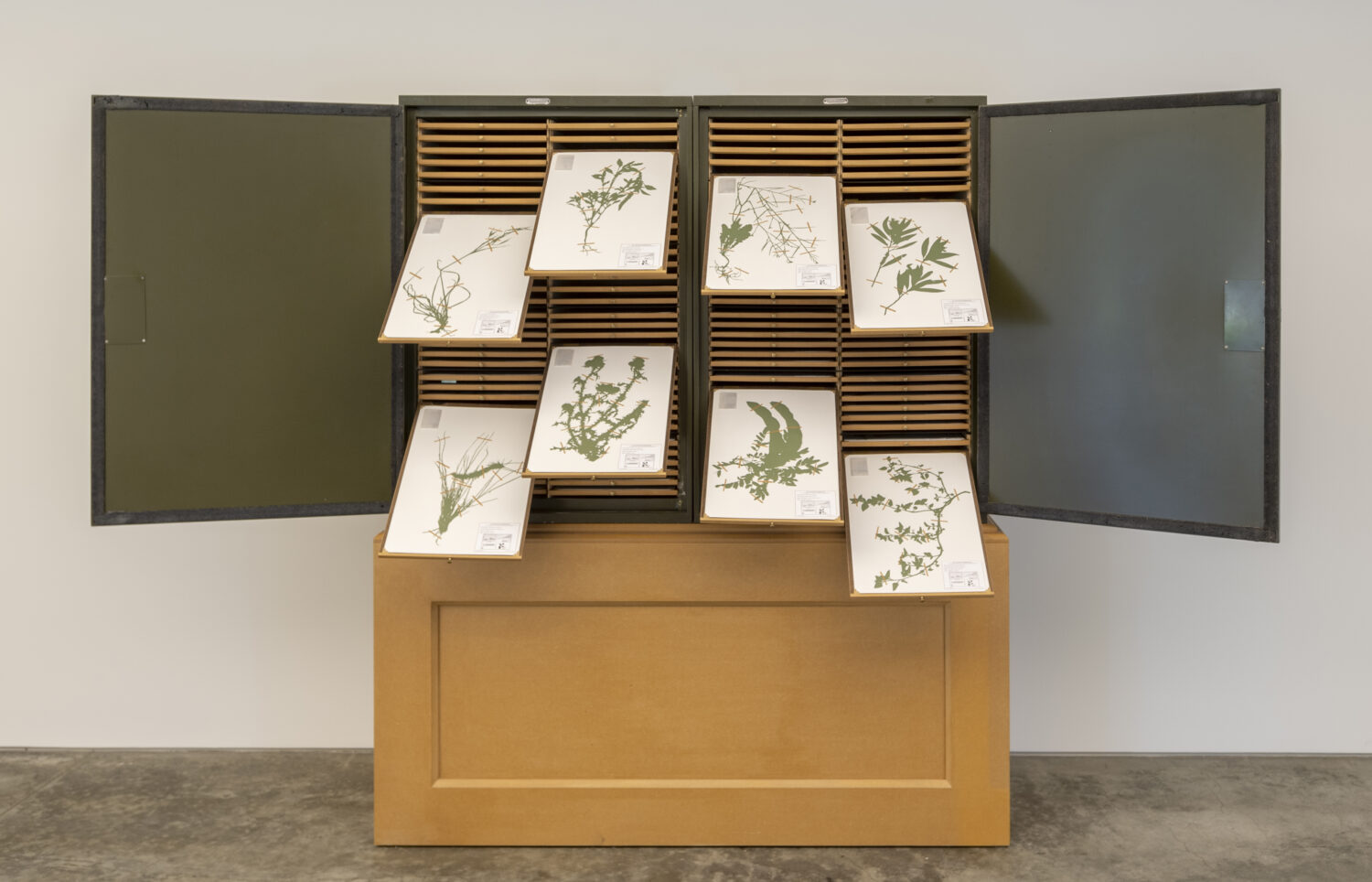
Jenny Yurshanksy: Blacklisted – A Planted Allegory, Herbarium
When was your first show?
My cousin reminded me that my first “show” was in my childhood bedroom, inspired by the children’s book “The Hundred Dresses.” I decided I would make one hundred drawings of dresses of my own design, with paper mattes as frames for them lining all the walls of the room. My first public exhibition was in the 2001 Istanbul Biennial as part of a collaborative project with Yutaka Sone called “A Beautiful Day.” This was one of those magical things that happened at UCLA. Sone’s art class also happened to be the very first one I took.
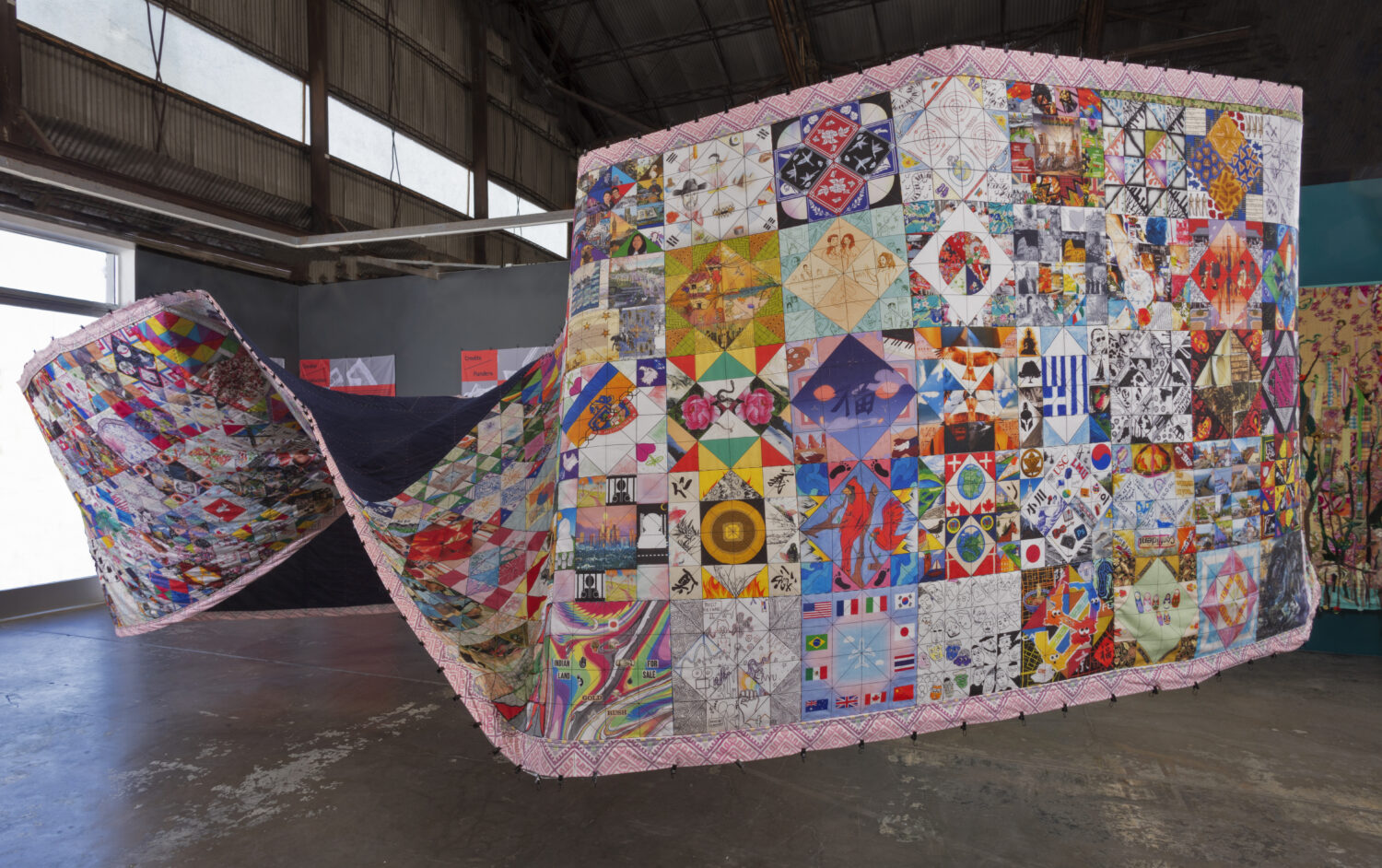
Jenny Yurshanksy: Unfolded Narratives
When is/was your current/most recent/next show or project?
Rinsing the Bones is my solo exhibition now on view at 18th Street Arts Center, located at the Santa Monica Airport, through November 30. The work in the show examines the repercussions of displacement and migration and offers ways for visitors to translate that experience and connect themselves to that ordeal through the stories of their families. I focus on what are the difficulties with the word “home” as an uncertain location outside the frame of nostalgia. It is so important that we have open conversations about these topics, but I know from the experience of trying to do so with my family just how difficult this can be to carry out.
This reality propelled me to organize a year-long series of workshops in the greater Los Angeles area with 300-plus participants from diverse geographic locations. Participants recounted their connection to migration through drawings, made paper fortune tellers, quilted on textiles created from these drawings, recorded audio testimonials, and had their most meaningful family keepsakes scanned. The Wende Museum has been an incredibly generous partner in doing this work and hosted most of these workshops. This collaborative process has culminated in pieces that transfer, translate, transform, and draw the thread of connection through our communal offerings. Our next workshop at 18th Street/Santa Monica Airport Campus will be on Saturday, September 16, from 1-4pm. Learn more and sign up by visiting this link.
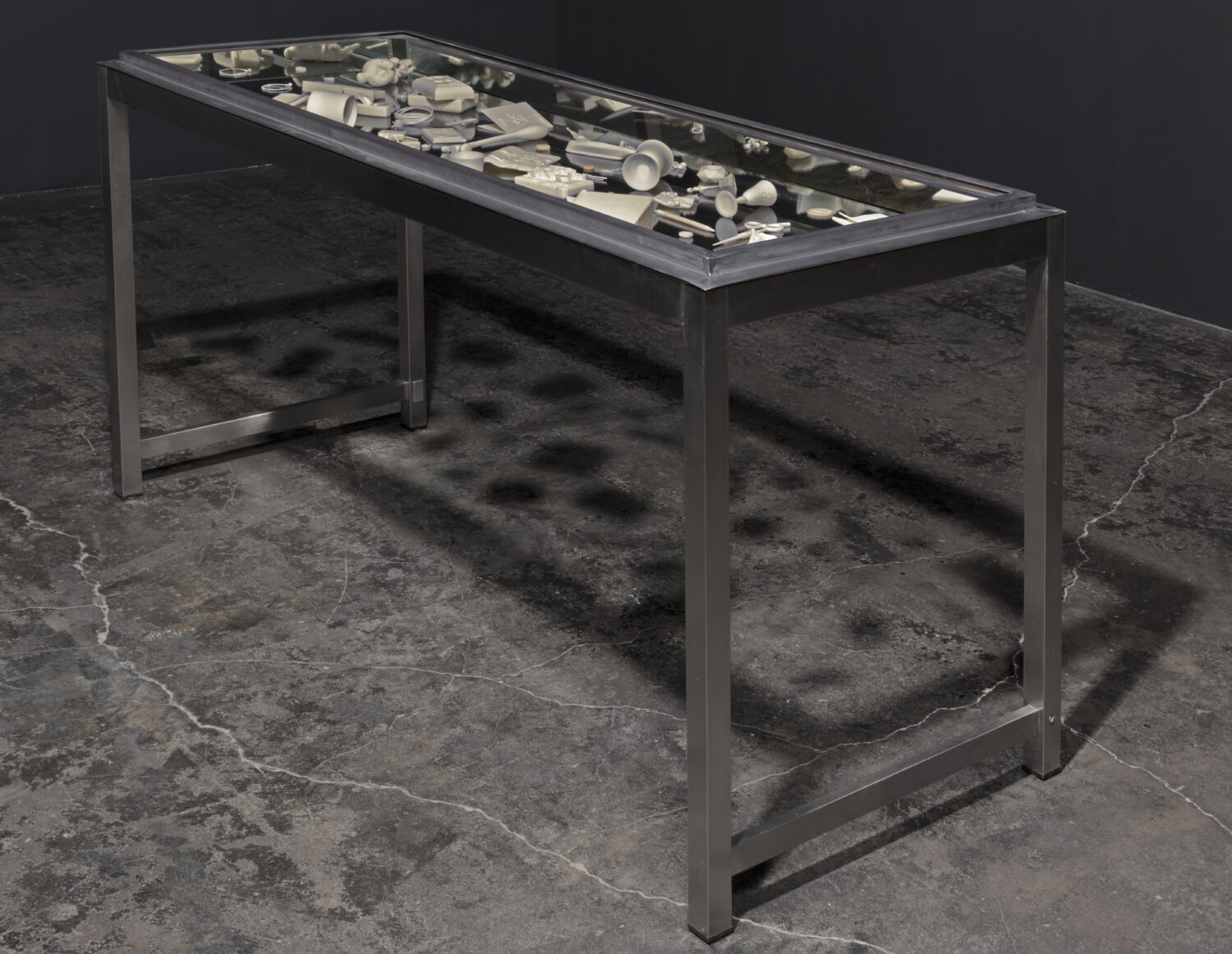
Jenny Yurshanksy: Rinsing the Bones
What artist living or dead would you most like to show or work with?
My dear friend and exceptional artist Samira Yamin. We chose the same wall color for our current exhibitions even though they were on opposite sides of the country without consulting or discussing with each other, even though we had both known we intended to paint the walls of our spaces from our earliest planning stages. There is so much that emerges from our regular conversations, especially as it pertains to our relationships to the socio-political determinations of place, identity, the means by which nationalism forms constructs of insiders and outsiders, and how all of these things are integrated into personal and cultural memory.
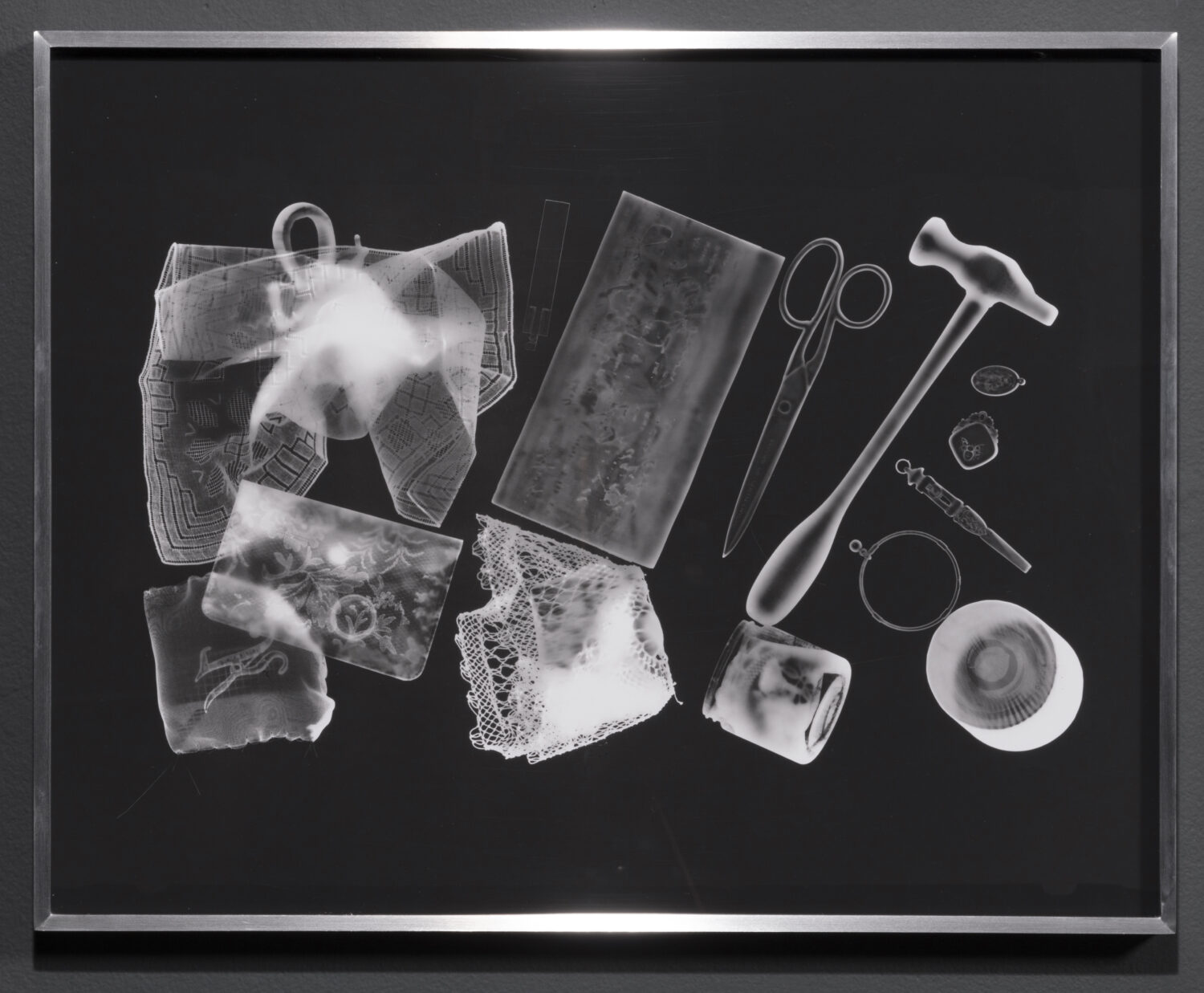
Jenny Yurshanksy: The Fugitive Archive
Do you listen to music while you work? If so, what?
I work mainly with noise-canceling headphones on, even when I’m by myself. When I’m doing repetitive tasks, it’s always information-based podcasts or books (mostly non-fiction and speculative fiction). When I’m writing, a large part of my practice, I’ll have my noise canceling headphones turned on without anything playing, a brown noise “playlist,” and if it is music it’s something that’s something soft and repetitive which I know well; this includes nearly anything from the Éthiopiques series, but I specifically love Homesickness, Pt. 2 by Emahoy Tsege Mariam Gebru, and Tezeta (Nostalgia) by Mulatu Astatke, and there’s the oldie but goodie of Erik Satie’s, Gymnopédies.
Website and social media handles:
IG: @jennyyurshansky
FB: facebook.com/jenny.yurshansky

Jenny Yurshanksy
/Editor’s note: The disclaimer below refers to advertising posts and does not apply to this or any other editorial stories.
Advertising disclosure: We may receive compensation for some of the links in our stories. Thank you for supporting LA Weekly and our advertisers.

